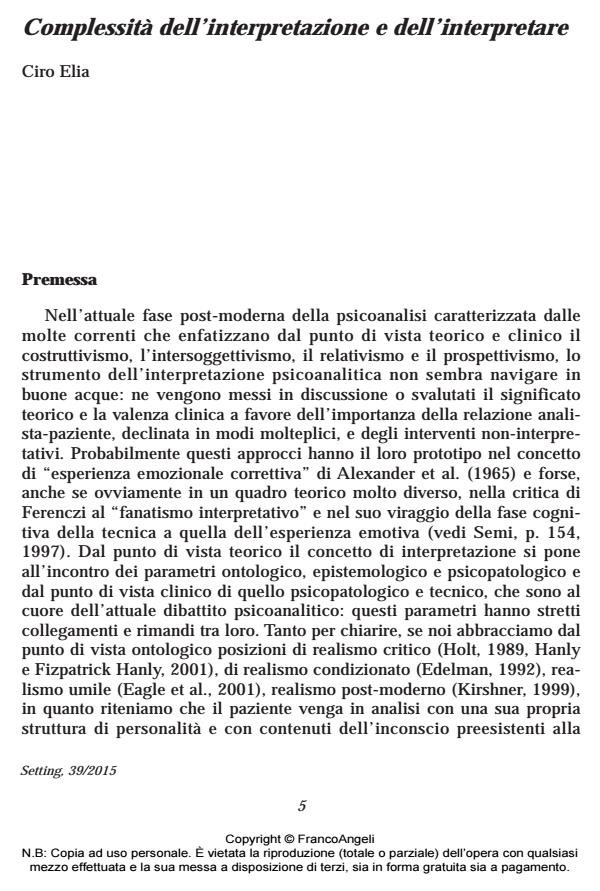Complessità dell’interpretazione e dell’interpretare
Journal title SETTING
Author/s Ciro Elia
Publishing Year 2017 Issue 2015/39
Language Italian Pages 15 P. 5-19 File size 434 KB
DOI 10.3280/SET2015-039001
DOI is like a bar code for intellectual property: to have more infomation
click here
Below, you can see the article first page
If you want to buy this article in PDF format, you can do it, following the instructions to buy download credits

FrancoAngeli is member of Publishers International Linking Association, Inc (PILA), a not-for-profit association which run the CrossRef service enabling links to and from online scholarly content.
The article first takes into consideration an outline of the evolution of the concept of interpretation since Freud up to nowadays, then addresses the validity and the relevance of the interpretative tool. The four technical parameters of the interpretative process ritically examined are: object, manner, timing, form. The interpretative process is considered in a close integration approach with the relational development of the therapy, not at all in an antinomic approach. Finally, the author discusses the different points of view about interpretation, that is the logical, the epistemogical, the ontological and the affective ones
Ciro Elia, Complessità dell’interpretazione e dell’interpretare in "SETTING" 39/2015, pp 5-19, DOI: 10.3280/SET2015-039001